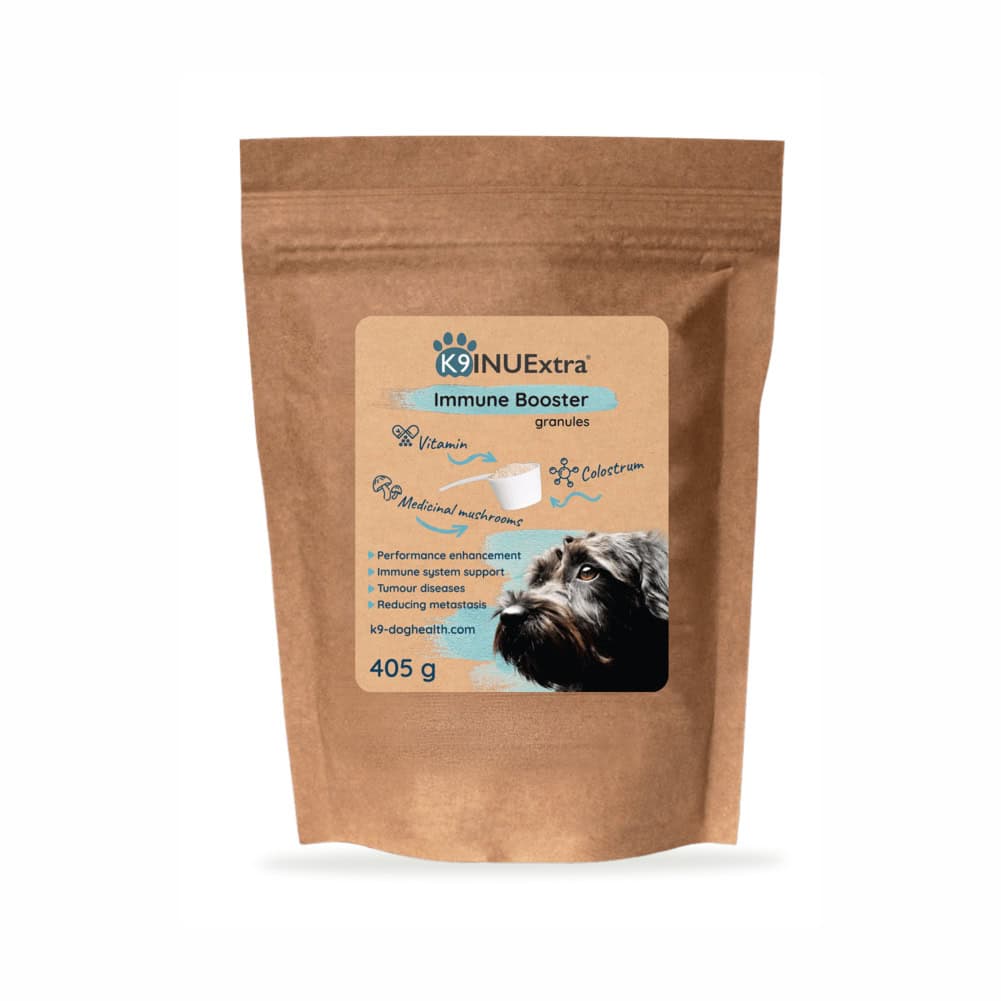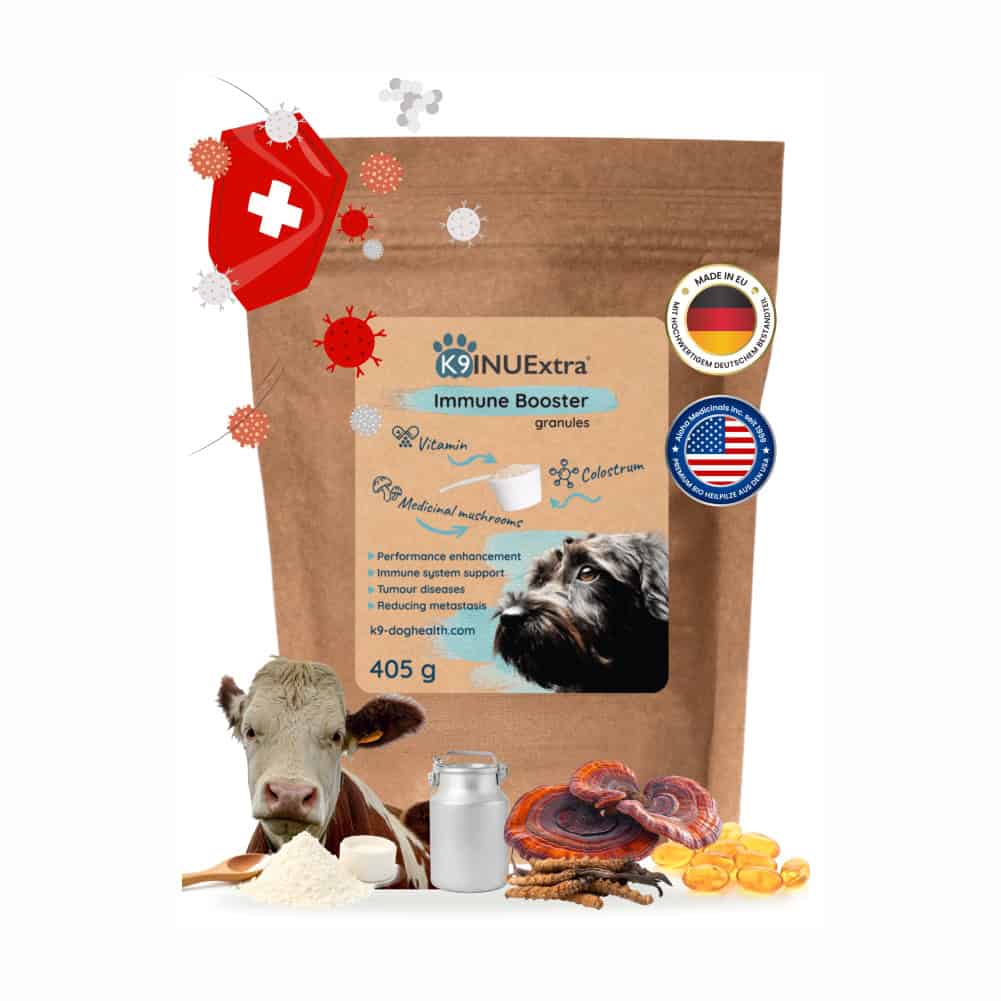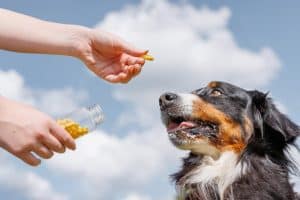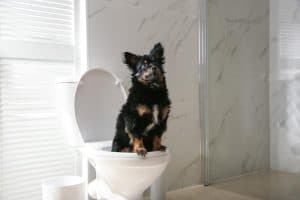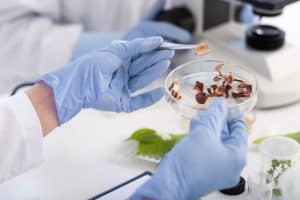Dog mammary tumor – Dogs are by far the most affected pets when it comes to mammary tumors. In fact, dogs are several times more likely to develop mammary tumors than women.
Almost half of all tumors in female dogs are mammary gland tumors! Neutering at a young age greatly reduces the risk of developing canine mammary cancer.
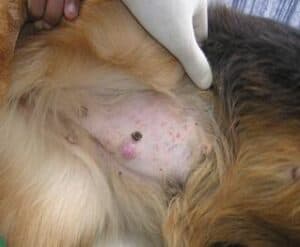
Dog mammary tumor (Source: vetscan.co.in)
The development of mammary tumors
The development of tumors usually requires several factors, so it is almost impossible to determine the exact cause. What is certain is that dog breast tumor is much more common in females than males. However, when males develop mammary gland tumors, the prognosis is much worse.
Certain breeds are genetically predisposed to mammary gland tumors. German shepherds, spaniels, English setters, toy poodles, Maltese, and Yorkshire terriers are among them.
Mammary tumors typically develop around the age of 10 and a half years and are very rare in dogs under 5 years old.
Risk of mammary tumors
The highest risk is in female dogs spayed after 2 years of age, or not spayed at all. In these cases, the incidence of mammary gland tumor dog is around 30%. One in three female dogs develops a mammary tumor.
Therefore, the best prevention is neutering at a young age.
If you are not planning professional breeding, you also avoid the risk of becoming an accidental backyard breeder.
Key statistics:
- The risk of canine mammary cancer in dogs spayed before the first heat cycle is 0.5%.
- If spayed after the first heat cycle, the risk increases to 8%.
- After the second heat cycle, the risk rises drastically to 26%.
About half of dog mammary tumor cases are benign, while the other half are malignant.
Symptoms of dog mammary tumors
The most common symptom of canine mammary cancer is a slow-growing swelling or lump around the mammary glands, which usually causes no pain. Over time, surface sores, ulcers and often inflammation may develop around the lump.
Other symptoms may include painful mammary glands, discharge from the nipples, and general signs such as lethargy, loss of appetite, sudden weight loss and weakness.
The importance of early detection
The outcome of canine mammary cancer depends heavily on how early it is detected. The earlier the diagnosis, the greater the chance of full recovery and longer survival.
As prevention, it is recommended to palpate the mammary glands at home, especially in dogs over 5 years old. An annual veterinary check-up also helps in early detection of mammary gland tumors.
Treatment of dog mammary tumor
In most cases, surgical removal of the mammary tumor is the standard treatment. Whether only the tumor, or also the surrounding tissues, lymph nodes, and the mammary gland are removed depends on the dog’s age, condition, tumor type and stage.
In some cases, chemotherapy may also be necessary after surgery.
Aftercare
Most dogs feel well the day after surgery. It is essential to provide the prescribed painkillers and antibiotics and to protect the wound from licking with a protective collar.
After removal of a malignant dog mammary tumor, check-ups are advised every 3 months during the first year, and every 6 months thereafter.
Prognosis and survival rates
The prognosis of canine mammary cancer depends on several factors: type (benign or malignant), stage, presence of metastasis, as well as the age and general condition of the dog. If removed early, the survival rates are significantly higher.
For malignant tumors, chemotherapy after surgery can extend survival, but regular veterinary follow-up is essential to prevent recurrence.
Survival time largely depends on when the diagnosis is made and the tumor stage. With early detection and surgical removal, dogs can live for 2–3 years in good quality of life, while in advanced metastatic cases, unfortunately, survival may only be a few months.
Dog mammary tumor and immunomodulatory therapy
Immunomodulatory therapy consists of two parts:
- using traditional methods to reduce tumor size and relieve the body (surgery, chemotherapy, radiotherapy),
- activating the immune system to recognize and attack tumor cells.
The K9 INU® and K9 INUExtra® products contain six natural immune-boosting medicinal mushrooms. Their main active compounds, heteropolysaccharides, have immunostimulatory, antitumor, and anti-metastatic effects.
Surgery and chemotherapy remove most of the tumor, but this is only half of the healing process. These methods do not cure cancer and do not correct the immune dysfunction that allowed tumor growth.
However, when surgery and chemotherapy remove the bulk of tumor cells, and immunomodulatory therapy (K9 INUExtra®, K9 INU® and K9 Immunity Plus™) activates the immune system, the chances of overcoming cancer and achieving normal lifespan are excellent.
Strengthening the immune system is vital in canine mammary cancer, Lymphoma, Osteosarcoma, Mastocytoma, Hemangiosarcoma and other immune-related diseases. Without the immune system’s active role, there is no real healing, only symptomatic treatment.
Vets often say, rightly, that treatment only extends life but the tumor is still there. Surgery and radiotherapy are essential to remove the developed tumor, but the body’s own strength is needed to beat the disease.
Lifestyle and dietary supplements
In caring for dogs with mammary tumors, not only surgery and medication matter, but also proper lifestyle and diet. A balanced, grain-free diet, regular exercise, and natural supplements support the immune system and improve the dog’s quality of life.
In addition to medicinal mushrooms, krill oil (K9 INUKrill®), vitamin C, and probiotics can also help strengthen the body of dogs with tumors.
Besides diet, regular, moderate exercise such as daily walks, play, and light activity helps maintain a healthy weight. Obesity is an independent risk factor for several cancers, including dog mammary tumor.
Alongside veterinary treatment, boosting the immune system is key! If you want to strengthen your dog’s immune system, explore our immune booster products for dogs.
More about dog cancers
References (English)
- Sorenmo, K. U. (2003). Canine mammary gland tumors. Veterinary Clinics of North America: Small Animal Practice, 33(3), 573–596.
- Perez-Alenza, M. D. (2000). Epidemiological study of canine mammary tumors. Veterinary Record, 146(19), 502–505.
- Goldschmidt, M. H., Peña, L., & Rasotto, R. (2011). Classification and grading of canine mammary tumors. Veterinary Pathology, 48(1), 117–131.
